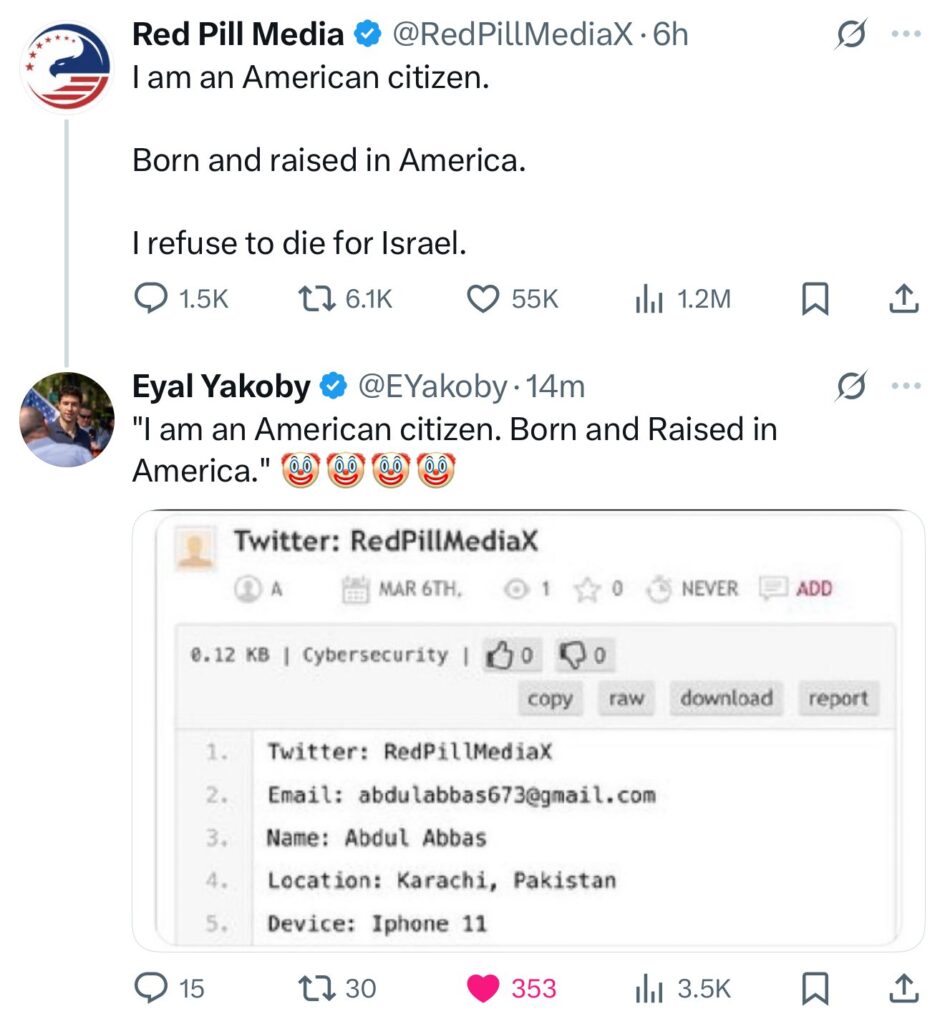We are developing the social individualist meta-context for the future. From the very serious to the extremely frivolous... lets see what is on the mind of the Samizdata people.
Samizdata, derived from Samizdat /n. - a system of clandestine publication of banned literature in the USSR [Russ.,= self-publishing house]
|
This is a real tweet from the European Commission:
https://x.com/EU_Commission/status/2004462313508950137f
One port, one cable, one Europe.
This holiday, unwrap the power of one: USB-C for all.
Yes, not just phones, tablets, and laptops. In three years, every charger will be under the same tree.
Because less waste, smarter choices, mean more for everyone, all year long.
https://link.europa.eu/QDMFTh
This is an excerpt from a scholarly article about the history of Islam:
By the beginning of the fourth century of the hijra (about A.D. 900), however, the point had been reached when scholars of all schools felt that all essential questions had been thoroughly discussed and finally settled, and a consensus gradually established itself to the effect that from that time onwards no one might be deemed to have the necessary qualifications for independent reasoning in law, and that all future activity would have to be confined to the explanation, application, and, at the most, interpretation of the doctrine as it had been laid down once and for all. This ‘closing of the door of ijtihad‘, as it was called, amounted to the demand for taklid, a term which had originally denoted the kind of reference to Companions of the Prophet that had been customary in the ancient schools of law, and which now came to mean the unquestioning acceptance of the doctrines of established schools and authorities.
– Joseph Schacht, quoted by Wael B. Hallaq in Was the Gate of Ijtihad Closed?
If you think that the ability of the European Commission to recognise when something has reached a point where no improvement is possible is good enough to allow it to safely close the door of ijtihad on charger cable design, consider the evident fact that none of the multiple people in the Berlaymont building over whose desks the draft of that tweet must have passed knew enough history to veto that title.
In what might come as a surprise to some, and I would suggest is a counter to a broad narrative, an Employment Tribunal (a form of Labour Court) in England has upheld the principle that criticism of ‘unreformed’ Islam is legally protected. The Tribunal considered a preliminary point as to whether or not the Claimant (Plaintiff in old, sound [ 🙂 ] money) could in principle bring a claim on the basis that he held a belief that had sufficient cogency as to be worthy of respect in a democratic society. As far as can be discerned from the judgment, there was an issue (which is very much now an issue for a determination on the merits at a later hearing) as to whether the employer was taking action against the Claimant (the circumstances of which we know nothing) because of his manifestation of his belief, (which is permissible) rather than because he simply held those beliefs, which is not permissible; e.g. a nurse who is a devout Christian being sacked for being a Christian rather than specifically, sacked for e.g. saying to a seriously-ill patient ‘Convert or face Hell-fire soon!‘ which could well be a manifestation of a belief at which offence might be taken.
The issue that the Tribunal considered is set out in the judgment (linked above) as follows:
“The belief that Islam, particularly in a traditional form – rather than a reformed, modernised, moderate and Westernised form – is problematic and deserving of criticism in so far as it fails:
(i) To recognise a separation between religion (sacred) and politics (secular) and/or the Church and state,
(ii) To value and respect fundamental human rights such as:
• freedom of conscience and of speech,
• to eschew and condemn violence in the name of religion (Islam),
• to treat and respect women and girls equally when compared to men and boys.”
The Claimant appears to have been ‘hauled up’ by his employer over his Twitter/X usage, there is reference to a file of 141 pages showing his Twitter feed, which the employer sought (at this stage) to use to argue that his belief in the need for a ‘reformation’ of ‘unreformed Islam’ was not genuinely held, i.e. that he was using this ‘belief’ as a shield for views that would not be protected. That is yet to be determined, if it is continued with by the employer.
The main points of the Claimant’s case were the following which he considered problematic were noted at paragraph 13 in the judgment:
‘In his witness statement [C/14], the Claimant has cited the following
“traditional and unreformed Islamic belief[s]” that are that are incompatible with “Western values” in that they:
(i) advocate or justify violence against non-believers or apostates;
(ii) promote unequal legal status for women;
(iii) call for the death penalty for apostasy, blasphemy or homosexuality;
(iv) reject the separation of religion and state, and seek to impose religious law;
(v) promote antisemitism or hatred towards groups including reformed Muslims;
(vi) condone child marriage;
(vii) permit forms of slavery or indentured servitude;
(viii) justify domestic violence, including wife-beating and female genital mutilation (“FGM”).’
It is important to note here that the Claimant’s belief isn’t about hostility towards Muslims as such, but to the holding and promotion of the ‘unreformed’ version of Islam that he is objecting to.
The issue for the Tribunal hearing the final case is summed up at paragraph 17:
‘The degree to which the Claimant will be able to establish that these tweets were a manifestation of the pleaded belief or that the Respondent will be able to show that these were inappropriate manifestations of, or otherwise separable from, the belief, are matters which fall to be decided at the final hearing.’
I.e. was the Claimant criticism of the ‘unreformed’ Islam that he weighs in against inappropriate, which takes into account the position that he held in the employer that he worked or works for.
There is nothing in this judgment that surprises me, it seems to be a legally-sound decision that the principle of criticising a belief on the basis of its incompatibility with ‘Western values’ (whatever they might be) is one where not only is it lawful, but an employer who acts against an employee for doing so (unless the manifestation is inappropriate) is itself acting unlawfully. Clearly, given that Courts are holding that such expression is legally-protected in principle, any notion that such comments are criminally unlawful are unfounded so any police action arising from those Tweets would be wholly unlawful.
The Guardian dutifully reports the inevitable:
Proof-of-age ID leaked in Discord data breach
Video game chat platform Discord has suffered a data breach, informing users that their personal information – including identity documents of those required to prove their age – were compromised.
The company stated last week that an unauthorised party had compromised one of Discord’s third-party customer service providers, leading to the access of “a limited number of users” who had been in contact with the customer service or trust and safety teams.
The data compromised may have included usernames, email, billing information, the last four digits of credit card numbers, IP addresses and messages with customer support.
Discord said the alleged attacker “also gained access to a small number of government ID images (eg driving licence, passport) from users who had appealed an age determination.
[…]
Discord began using facial age assurance to check the age for users in the UK and Australia earlier this year. The company said facial images and ID images “are deleted directly after” ages are confirmed, but Discord’s website noted that if verification fails, users can contact the trust and safety team for a manual review.
Under the under 16s social media ban to come into effect on 10 December, the Australian government has outlined that it expects platforms such as Discord – which is one of the platforms that has been asked to assess if it is required to comply – should have multiple options for assessing a user’s age, and a way for them to quickly appeal an adverse decision.
Platforms can ask for ID documents as part of the age assurance scheme, but it cannot be the sole method of age assurance offered by the platforms under the policy.
In other words, the reason why users from the UK and Australia have been affected in particular is because the UK’s Online Safety Act and Australia’s upcoming ban on under-16s using social media oblige users in those countries to verify their age by giving identifying information to social media companies. The first means of age verification is facial recognition software, but if that doesn’t work, as it frequently doesn’t, the user must give the social media company identifying information such as their username, their email address, their billing information, the last four digits of their credit card number, etc. Which then gets stolen. This procedure is called “keeping people safe online”.
Imagine facing your nation’s Supreme Court for the “crime” of sharing a Bible verse. On October 30, that’s the reality for Päivi Räsänen, a Finnish grandmother, medical doctor, and parliamentarian. Her soon-to-be seven-year ordeal began in 2019, when she questioned her church’s support for Helsinki Pride and posted a Bible verse on X. That single tweet triggered 13 hours of police interrogation, two full trials, and now a third prosecution under Finland’s “hate speech” law.
Räsänen’s case might sound like an exclusively European story — but it also serves as a warning about the growing threat of censorship coming from the EU. While someone living outside of Europe might assume they are exempt from the troubling wave of censorship spreading across the continent, that assumption is dangerously mistaken.
– Lorcan Price
This is interesting.
“American businesses do not surrender their First Amendment rights because a foreign bureaucrat sends them an e-mail.”
Hopefully more sites and services outside the UK will refuse to comply with the appalling Online Safety Act.
A trade group representing companies that build age verification systems is now lobbying to extend these checks to anyone using a VPN in the UK. The Age Verification Providers Association (AVPA) wants online platforms that fall under the UK’s censorship law, the Online Safety Act, to not only detect VPN usage but also analyze user behavior to guess whether someone might be a minor in disguise.
If flagged, users would face a prompt: prove your age, or allow a one-time geolocation to confirm you’re outside the UK.
According to the AVPA, this process is necessary because VPNs can mask users’ actual locations, allowing them to appear as though they are in countries where age verification laws do not apply. The association points to data showing a dramatic increase in VPN use around the time the UK’s new internet rules were enforced, suggesting people are using these tools to bypass restrictions.
This approach treats privacy tools as a form of defiance. Here, VPNs, once considered sensible and essential for online security, are being rebranded as suspicious.
– Richard Eldred
The BBC says “According to Ofcom, platforms must not host, share or permit content encouraging use of VPNs to get around age checks.”
I encourage the use a VPN to get around all state abridgement of people’s right to access the internet, including age checks. Say no to police state Britain, not to mention a VPN enhances your security online.
The free and open internet has now ceased to exist in the UK. Since Friday, anyone in Britain logging on to social media will have been presented with a censored, restricted version – a ‘safe’ internet, to borrow the UK government’s language. Vast swathes of even anodyne posts are now blocked for the overwhelming majority of users.
The Online Safety Act was passed by the last Conservative government and backed enthusiastically by Labour. Both parties insisted it is necessary to protect children. Supposedly, its aim is to shield them from pornography, violence, terrorist material and content promoting self-harm. Age-verification checks, we were assured, would ensure that children would not be exposed to inappropriate content, but adults could continue using the internet as they please. Yet as we have seen over the past few days, on many major tech platforms, UK-based adults are being treated as children by default, with supposedly ‘sensitive’ content filtered from everyone’s view.
– Fraser Myers
Police state Britain needs nothing less than a revolution.
When Israel struck Iranian targets on June 13th, something strange happened four days later—thousands of Twitter accounts tweeting about Scottish independence just… stopped.
That silence? It wasn’t just suspicious. It was evidence.
In this video, I walk you through how a digital blackout in Iran exposed one of the largest Iranian disinformation operations targeting the West. Working with Cyabra, we tracked over 1,300 fake accounts—AI-generated personas pushing division in the UK, attacking the BBC, and praising Iran. And when the lights went out in Tehran, those bots vanished too.
Then they came back… parroting entirely new propaganda.
This is a masterclass in how modern influence warfare works—how state-sponsored actors weaponize your feed and how even silence can be a signal.
– Ryan McBeth
In December 2023, I asked “Non-sarcastically, why am I so sure that this image is generated by AI?” and listed the reasons why I thought that a picture purporting to show gleeful Israeli soldiers in Gaza was a fake.
In July 2025, I must modify my question. Why am I mostly sure that this image, also purporting to show events in Gaza, is generated by AI?

I saw the picture in a Telegraph story written by Melanie Swan and called “More than 90 dead in UN aid truck massacre in Gaza”. The caption says, “Injured Palestinians are taken to hospital after over 90 were killed waiting for humanitarian aid Credit: Ali Jadallah/Anadolu via Getty”.
Here are some of the reasons why I think the picture is AI-generated:
I always start by counting their fingers and toes. The left foot of the guy holding his knee appears to have six of the latter.
The little toe of the left foot of the bare-legged boy sitting in the centre looks wrong; too wide, no toenail – just a wedge of flesh.
Staying with the boy, his legs seem malformed – the distance from knee to ankle too long, the thigh too short and too narrow.
His right arm is too short and floppy, like the vestigial arm of a Tyrannosaurus Rex.
The little finger of the hand of the guy with the beard seated on the right of the picture does not join up to the hand correctly – either that or he was unfortunate enough to be born with his left hand where his right hand ought to be.
The writing on that white bag on the shelf is blurred in a way characteristic of A.I.
Moving back to the left of the picture, where is the long, thin arm pointing diagonally downwards coming from? In what position would a person be lying or standing in order to have their arm come out at that angle?
Compare the thin arm to the arms of the other people in the picture. It looks too long and thin to be true; an adult’s arm would be thicker, a child’s arm would be shorter. And, though I strain to see it, the hand looks almost as if it has two thumbs.
If you look at the picture under high magnification, it looks almost like someone has drawn around the figures with a Sharpie. These black outlines are particularly noticeable with the long-legged boy and the man clutching his knee.
This one is more speculative, but do the interiors of Israeli or Palestinian ambulances actually look like that? The (oddly sparse) contents of the shelves suggest a medical purpose, but the shelves themselves look like they come from someone’s kitchen.
Taken separately, all of the above points could be explained away. Lenses distort. Human bodies vary. Hunger makes people thin. Perhaps I will end up deleting this post in shame at having questioned the suffering of real human beings. Perhaps, but, having been able to find at least eight oddities, I think that Getty Images would be justified in putting a few pointed questions to Ali Jadallah.
However, I was right to say in 2023 that “this image is a great deal more realistic than those of only a few months ago. My spidey-sense for fake pictures will not last much longer”. It is even more true now.
Added 22/07/2025: Reading the comments to the Telegraph article, a lot of the commenters are saying, like me, that one of the photographs the Telegraph has used to illustrate it is fake. Only they are talking about a different picture. This one:

It shows a boy running away while a cloud of smoke rises from the buildings behind him.
With the picture of the men in the vehicle that I talked about above, my suspicions were raised the instant I saw it. The hyper-defined outlines and sharp colours gave a sort of slick, sweaty appearance to the flesh of the people depicted that I have often seen in A.I. art and noticed on that picture even before I started counting their digits. There is nothing like that in this second picture. The strange things about it suggest Photoshop rather than DALL-E or Midjourney. The border of the smoke cloud is at a suspiciously neat 45 degree angle. There is also something suspicious about the way the buildings to the left of the boy merge into the smoke. But the main problem is the running boy himself. The photographer appears to have caught him in mid-air – fine, that can happen when taking a photo of a person leaping or running, and catching that moment is usually considered the mark of a successful, dramatic picture – but he is too high off the ground to be plausible. And he has no shadow.
Or does he? There are two darker almost-horizontal lines or one slightly bent line below and to the left of him that could be his shadow. And before anyone brings up the similar horizontal lines to the right of him, those could be the shadow of a tree or pole just outside the picture. He is still suspended at an unlikely height, though. All in all, I am less convinced of the fakeness of this picture than of the other one – and the whole point of this post was that it is getting harder and harder to tell.
We are entering an age in which decisive authentication of a photograph will no longer be possible. The question will be whether one trusts the source. I do not trust anything coming out of Gaza.
Sadiq Khan, the Labour mayor of London, and Anne Hidalgo, the Parti Socialiste mayor of Paris, have written a joint article for the Guardian called “In London and Paris, we’ve experienced vicious backlash to climate action. But we’re not backing down”. They write,
“We welcome efforts such as the EU’s Digital Services Act, which requires online platforms to counter the spread of illegal content, including disinformation, and lays the groundwork for holding platforms accountable. But much more is needed. For example, the UK’s Online Safety Act could be strengthened by explicitly recognising climate disinformation as a form of harmful content.”
It is remarkable how people who would be ashamed to support a law to “counter the spread of illegal speech” happily praise a law that “counters the spread of illegal content.” The magic of words: just re-label “speech” as “content” – as being inside something – and it can now truly be contained, as in “restrained or controlled”.
The same people regularly proclaim that Europe is a place which has banished censorship of the press. That is almost true, although both the EU and the UK governments are working to restore their old powers. In the meantime they are willing enough to temporarily refrain from censorship of ideas spread by old technology if it gives them cover for censoring ideas spread by new technology.
Do not go along with their word games. The term “Freedom of the press” is not restricted to words conveyed to the public by means of a a mechanical device for applying pressure to an inked surface resting upon a print medium. Nor does “freedom of speech” only refer to words that come out of mouths by the action of tongue and lips. In the words of a source they claim to respect, Article 19 of the Universal Declaration of Human Rights says,
Everyone has the right to freedom of opinion and expression; this right includes freedom to hold opinions without interference and to seek, receive and impart information and ideas through any media and regardless of frontiers.
Emphasis added.
And while I’m emphasising things, let me also emphasise this: the minute I learn that an idea is being censored, I give that idea more credence.
No, that does not mean that I automatically believe any censored idea entirely. (How could I? A million contradictory falsehoods are censored alongside the truth. The problem is that the act of censorship destroys our ability to tell which of them is the truth.) It means that I strain to hear what is being said behind the gag. It means that I start to wonder how real the claimed consensus is, if those who depart from it are silenced. It means that I start to wonder why the proponents of the “accepted” view feel the need to protect it from counter-arguments.
I said in 2012 that my belief in Catastrophic Anthropogenic Global Warming (CAGW) was two and a half letters to the left compared to most commenters on this blog. Damn, it should have been one and a half letters to the right. Oh well, you knew what I meant. With regard to CAGW or whatever they are calling it now, whether I phrase it as my belief moving to the left or my disbelief moving to the right, the surest way to make that movement happen is to pass a law defining “climate disinformation as a form of harmful content”. Then I will know that the so-called scientific consensus on climate change is no such thing. If certain hypotheses cannot be discussed, not only is there no scientific consensus, there is no science.
-*-
A related post, but focussing on self-censorship rather than the government censorship that Mayors Khan and Hidalgo favour: “Bubbles, lies and buttered toast.” Any form of censorship is fatal to science.

Nice one Eyal! This is great work and genuinely hilarious 😀
|
Who Are We? The Samizdata people are a bunch of sinister and heavily armed globalist illuminati who seek to infect the entire world with the values of personal liberty and several property. Amongst our many crimes is a sense of humour and the intermittent use of British spelling.
We are also a varied group made up of social individualists, classical liberals, whigs, libertarians, extropians, futurists, ‘Porcupines’, Karl Popper fetishists, recovering neo-conservatives, crazed Ayn Rand worshipers, over-caffeinated Virginia Postrel devotees, witty Frédéric Bastiat wannabes, cypherpunks, minarchists, kritarchists and wild-eyed anarcho-capitalists from Britain, North America, Australia and Europe.
|






